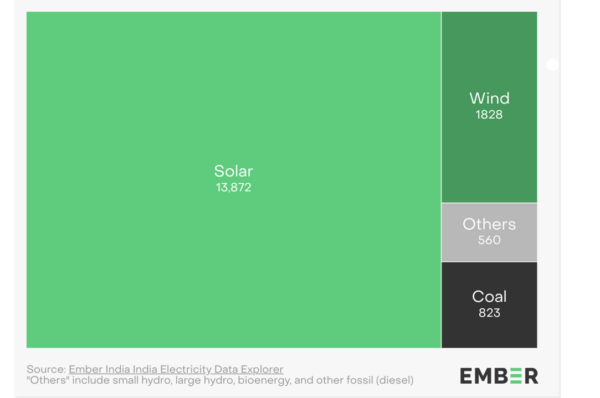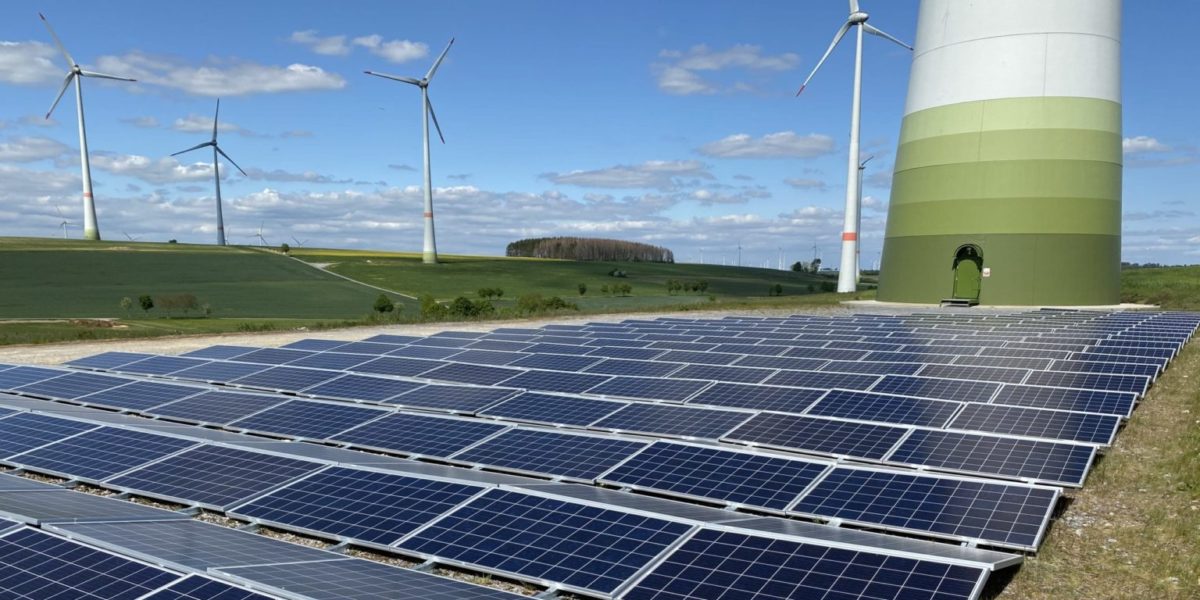India installed 17,083 MW of power generation capacity in 2022, with solar and wind forming 92% (15.7 GW) of the addition. Coal capacity amounted to less than 1 GW (5%), 78% less than the addition in 2021. The strong growth in renewables sets the stage for the country to assume climate leadership in the run-up to the G20 summit this year, says a new analysis from global energy think tank Ember.
The analysis from Ember tracks the monthly progress of Indian states and union territories against 2022 renewable energy targets, using data from India’s Ministry of New and Renewable Energy.
Rajasthan and Gujarat emerged as the top two states with the most renewable electricity capacity additions in 2022, led especially by solar. The two states added 8.6 GW of solar.
Rajasthan accounted for 43% (6.7 GW) of India’s total solar and wind capacity deployments in 2022 (15.7 GW). “This was the largest ever annual combined solar and wind capacity addition at the state level in India’s history,” stated Ember.

Image: Ember
Gujarat installed 3.1 GW of solar and wind in 2022, about half of Rajasthan’s installations. The analysis also reveals that Gujarat now has 18.5 GW of clean electricity capacity, surpassing its planned target for the year.
Ember projects that the growth in renewable generation capacity will continue to be concentrated in Rajasthan and Gujarat. Rajasthan and Gujarat aim to reach 90 GW and 61 GW of renewable capacity by 2030, respectively. To achieve these targets, Rajasthan must deploy about 8.6 GW and Gujarat 5.4 GW of renewable capacity annually for the next eight years.
If these 2030 targets are realized, renewable capacity in the two states will account for one-third of India’s total renewable capacity target of 450 GW by 2030, most of which is solar and wind.
“India, especially the states of Rajasthan and Gujarat, have demonstrated to the world that rapid deployment of solar and wind is not only possible but also already happening. As the country presides over the G20 presidency this year, India is well-positioned to take climate leadership as a prime example of the possibilities of enabling clean power generation by unleashing solar and wind power,” said Ember’s Asia data analyst, Uni Lee.
This content is protected by copyright and may not be reused. If you want to cooperate with us and would like to reuse some of our content, please contact: editors@pv-magazine.com.









By submitting this form you agree to pv magazine using your data for the purposes of publishing your comment.
Your personal data will only be disclosed or otherwise transmitted to third parties for the purposes of spam filtering or if this is necessary for technical maintenance of the website. Any other transfer to third parties will not take place unless this is justified on the basis of applicable data protection regulations or if pv magazine is legally obliged to do so.
You may revoke this consent at any time with effect for the future, in which case your personal data will be deleted immediately. Otherwise, your data will be deleted if pv magazine has processed your request or the purpose of data storage is fulfilled.
Further information on data privacy can be found in our Data Protection Policy.